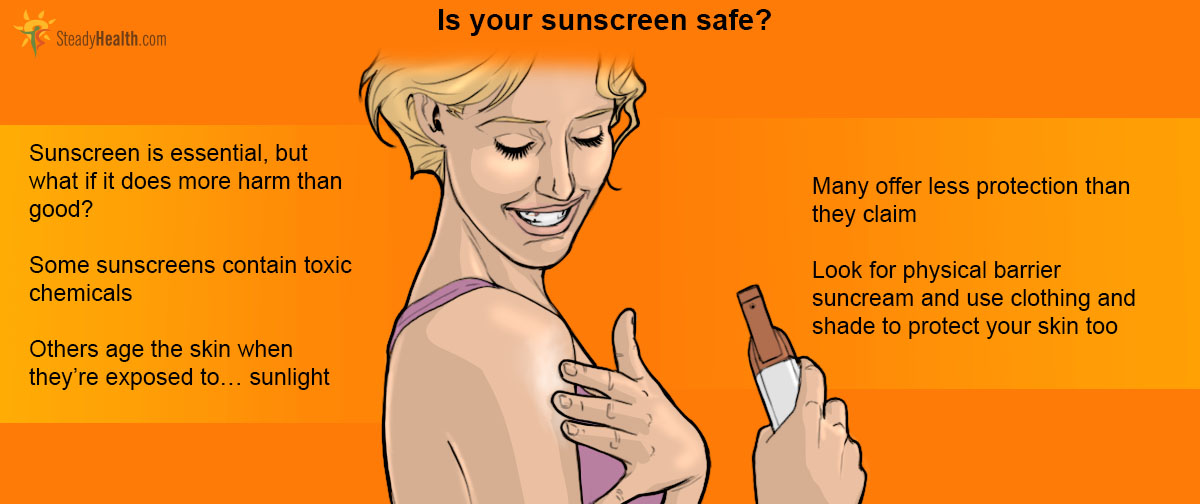Table of Contents
Wearing sunscreen is right up there with seatbelts and not smoking in the list of health no-brainers. But not everyone is aware of the reasons it’s important. When everyone tells you you should do it, but no-one tells you why, it's easy to dismiss all the nagging. But this time, the busybodies are right on the money.
Skin cancer rates, once falling, are actually on the rise again as people abandon sunscreen because they find it uncomfortable. But protecting yourself from the sun is vital for health. People worry about vitamin D — but most people will get enough sunlight for their vitamin D needs in about 15 to 30 minutes outdoor activity, even on cloudy days.

The other big myth is that you're safe from sunburn because it’s cold, or it's overcast. But what burns you is UV radiation, not heat, and that punches through clouds and reflects upward from snow, increasing your chances of burning.
Still not convinced?
According to the Skin Cancer Foundation, a person's chances of developing skin cancer double if they’ve had five or more sunburns.
So I just got done selling you on sunscreen. Now I’m going to tell you how dangerous it is.
It’s not that simple. Some sunscreen is safe. Some is really dangerous.
What’s Dangerous About Sunscreen?
A lot of it comes down to the active ingredient. Sunscreen works two ways, physical or chemical. Physical sunscreen reflects the sun’s rays away from your skin before they hit. Chemical sunscreen stops the sun’s rays with chemicals that absorb their energy before they burn you.
Chemical Sunscreens
Chemical sunscreens often contain chemicals like Oxybenzone, Octinoxate, and Octocrylene. Oxybenzone is a pseudoestrogen that’s found in about 97 percent of Americans’ bodies — no, that’s not a misprint. It penetrates the skin and messes with your hormone balance, and it's been associated with low birth weight in infants. One to avoid. Otinoxate is another pseudoestrogen that’s easily absorbed through the skin, and it’s considered unsafe for wildlife because of its estrogen-like effects.
Octocrylene is an active ingredient that absorbs the rays from the sun. But all that energy has to go somewhere. It can't just sit there. It has to become another form of energy - heat, or chemical energy. In the case of Octocrylene it goes to break up the chemical bonds in the substance itself, releasing free radicals that attack the skin and can cause mutations. So if you use a sunscreen containing octocrylene, you’re protecting your skin from damage that can cause mutations by… you see where I’m going with this, right?
READ Fifteen Natural Sunburn Remedies
Physical Sunscreens
Throughout time people have used clay, mud and resin as a physical sunscreen. But smearing yourself with mud isn’t on most holidaymakers’ to-do list. So the active ingredient in most physical sunscreens is either zinc oxide or titanium dioxide. Both are relatively safe but they tend to leave a white mark unless they use miniaturised particles - nanoparticles - of the active ingredient. When that happens titanium dioxide is absorbed by the skin and while it’s safe on the outside of your body, once it gets in it’s a carcinogen.
- SkinCancer.org http://www.skincancer.org/prevention/sunburn/facts-about-sunburn-and-skin-cancer
- EWG.com http://www.ewg.org/2015sunscreen/report/whats-wrong-with-high-spf/
- Photo courtesy of miss pupik via Flickr: www.flickr.com/photos/miss_pupik/1231275978
- Photo courtesy of miss pupik via Flickr: www.flickr.com/photos/miss_pupik/1231275978
- Mind map by SteadyHealth.com
- Mind map by SteadyHealth.com


Your thoughts on this